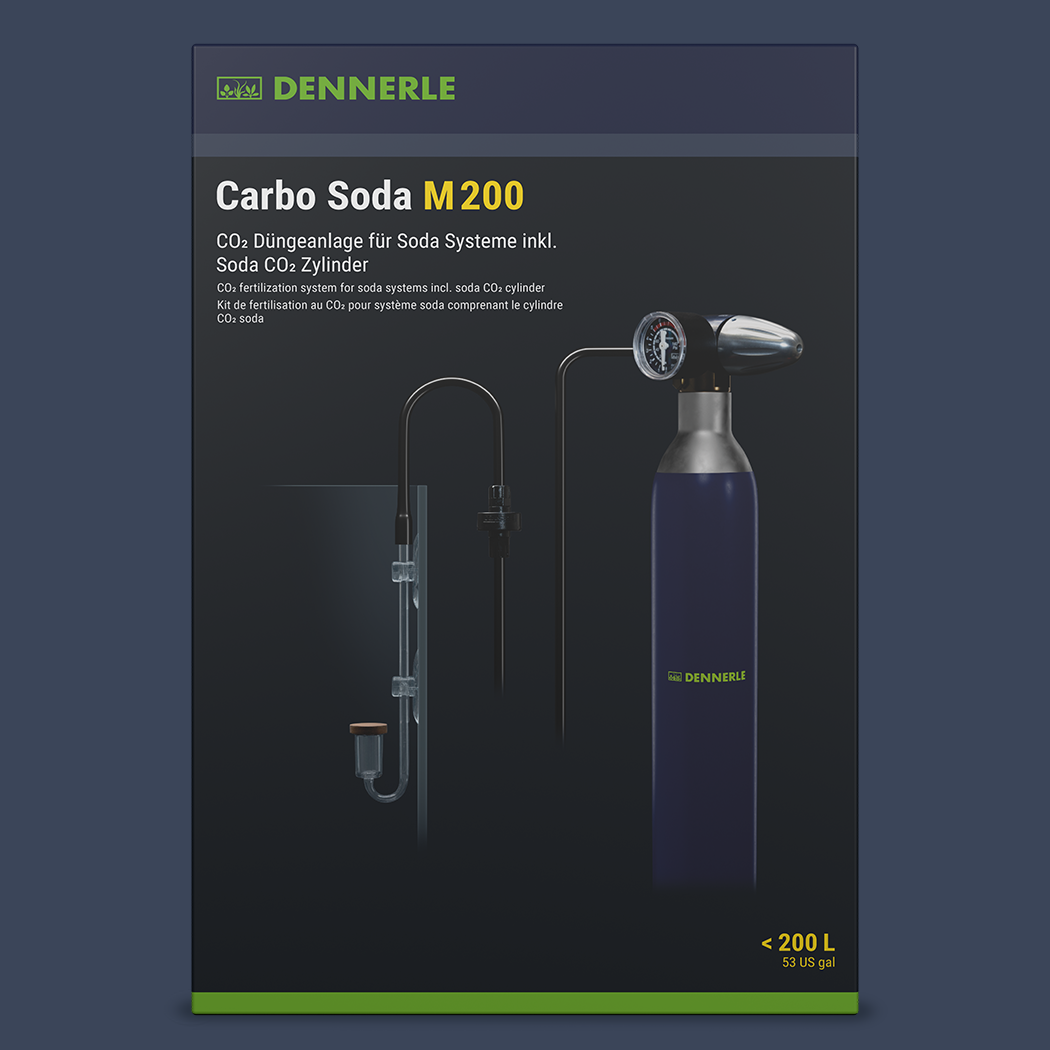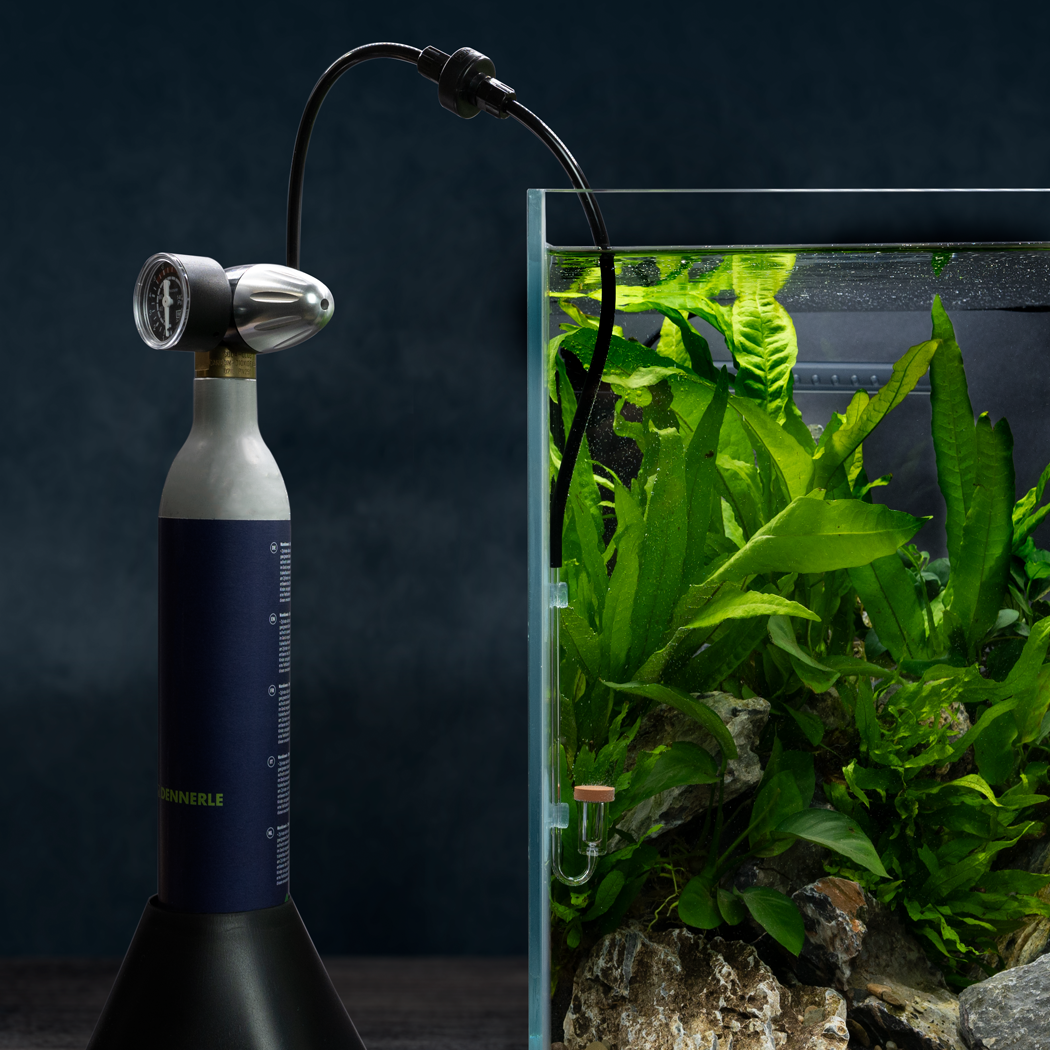




Carbo Soda M200
CO2 fertilization system for soda systems including soda CO2 cylinder
- Complete set for aquariums up to 200 liters
- Connection suitable for all conventional soda cylinders
- With precision pressure reducer made of milled aluminum
- Dynamic Valve Control (DVC) for a constant CO2 supply
- Integrated pressure gauge to display the working pressure
Often bought together with
CO2 fertilization system for soda systems including soda CO2 cylinder
The practical alternative to classic CO2 fertilization systems
With our new CO2 fertilization system Carbo Soda M200 you can use a standard soda CO2 screw cylinder as a CO2 source. The advantage is that soda cylinders are readily available and can be easily exchanged. A good and consistent CO2 supply is important for the healthy growth of aquarium plants and makes it easier to care for your aquarium. This gives you the opportunity to create perfect conditions for plants and aquarium inhabitants.
Carbo Soda M200 in detail
Downloads
Product data
Carbo Soda M200
Item No.
Barcode
Dimensions (W x D x H)
Informationen zur Produktsicherheit
Hersteller
- Unternehmensname: Dennerle GmbH
- Adresse: Industriestraße 4, 66981 Münchweiler, Deutschland
- E-Mail: service@dennerle.com
- Telefon: +49 6395 9107-440
Carbo Soda M200